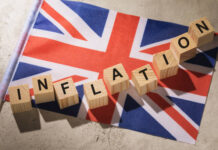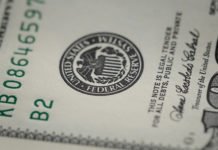Markets
The US 10-yr yield temporarily breached 5% for the first time since July 2007. The US 5-yr yield is now the only point on the curve not to have traded above that psychological number this month. Daily changes currently vary between +4.0 bps (2-yr) and +6.2 bps (10-yr). Friday’s US budget data put the onus on deteriorating public finances, reminding the investor community that the US government will run a 7%-plus deficit at a time when the US central bank is running down its balance sheet. Fears that the Israeli-Hamas tensions would escalate or turn into a broader Middle-East conflict didn’t materialize. The latter doesn’t prevent a stock sell-off with European indices currently down another 0.5%. US indices open up to 1.0% lower (Nasdaq) with stock market shell-shocked by the new bond sell-off. Finally, it’s worth nothing that US inflation expectations are testing the upper bound of this year’s sideways trading range between 2.1% and 2.5%. Since Fed talk shifted towards skipping the November rate hike (because of higher LT bond yields tightening financial conditions), we’ve seen US inflation expectations adding around 15 bps. That’s because US eco data continue to point to a (very) tight labour market in combination with a soft landing scenario. If the Fed holds rates while inflation remains to high and growth stronger than expected than it will translate into… higher inflation expectations at the long end of the curve. Once again highlighting the Catch-22 of the US central bank. It’s a materialization of the Fed’s own prophecy: “the risk/economic cost of stopping the tightening cycle too fast is way bigger than conducting a rate hike too much”. The trade-weighted dollar remains somewhat numbed by current market conditions (risk aversion, higher volatility and rising real rates vs credit risk and inflation expectations). DXY holds steady just above the 106-level while EUR/USD switches sides around 1.06 (currently 1.0610). USD/JPY briefly surpassed the 150-level this morning, with lives to fight another day (149.90). Last week’s technical break above EUR/GBP 0.87 stands for now (0.8715).
The Belgian debt agency today tapped OLO 86 (€0.52bn 1.25% Apr2033), OLO 97 (€1.23bn 3% Jun2033) and OLO 98 (€1.08bn 3.3% Jun2054). The combined amount sold (€2.83bn) was near the upper bound of the indicative €2.6-2.9bn target range. The total auction bid cover was rather low at 1.32. The richening of OLO’s following the debt agency’s bumper €22bn retail note earlier September is a probable cause. The debt agency now raised a total amount of €43.03bn in OLO funding this year (€16bn syndications), exceeding the official target of €42.1bn. News & Views
Not a day goes by lately or rumours about the Bank of Japan readying possible tweaks to its ultra-easy policy hit the news wires. Reuters today citing three sources familiar with the matter reported the possibility the BoJ could change its yield curve programme at the October 31 policy meeting. Much depends on how the market moves leading up to that date, they said. Japanese yields have risen sharply in lockstep with rates in other advanced economies including the US. The 10-y yield today rallies further north to a new 16-year high of 0.877%, closing in on the current de facto 1% yield cap. While there’s no consensus currently to raise this cap immediately (i.e. at the October meeting), doing so would take off pressure on the BoJ to ramp up bond buying in an already thin market. But some in the committee fear such action would be seen as the central bank plotting an exit strategy at a time when they consider ultra-easy policy still necessary. The BoJ’s steadfast approach has come with a great cost for the yen. USD/JPY briefly rose above the critical level of 150 in Asian dealings this morning.
Germany’s Bundesbank in its monthly report said that the economy probably contracted “somewhat” in the third quarter this year. The central bank referred to declining industrial production, a shrinking construction sector and weakening demand (including externally). The Bundesbank noted ongoing strong employment and wage increases serve as a buffer for the economy amid an extended period of flat or negative growth (four consecutive quarters if the Q3 projection materializes). That said, the jobless rate could tick up slowly towards the end of the year. It expects inflation to ease further in coming months though core inflation may remain above 4% amid sticky service sector price pressures.













